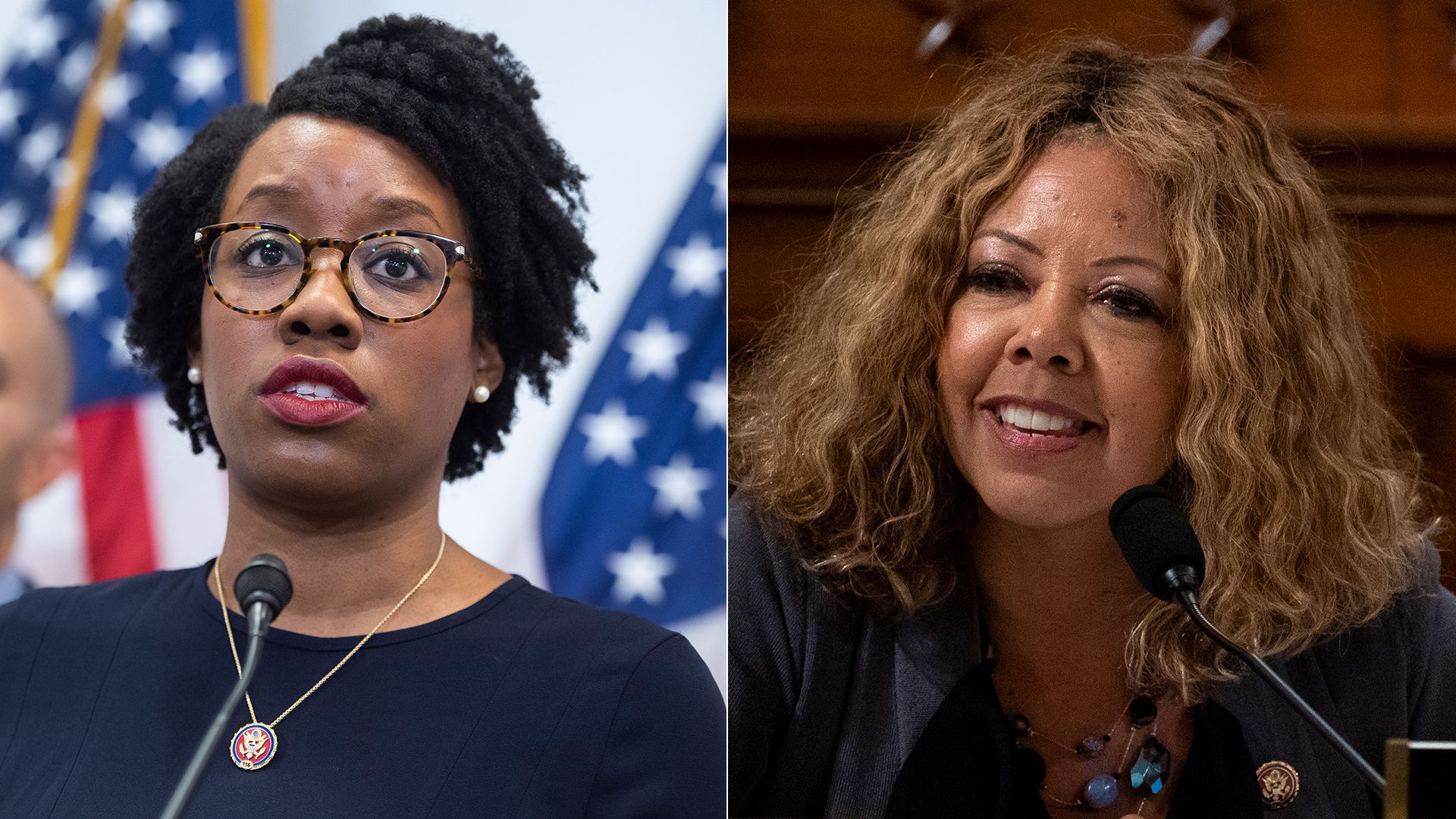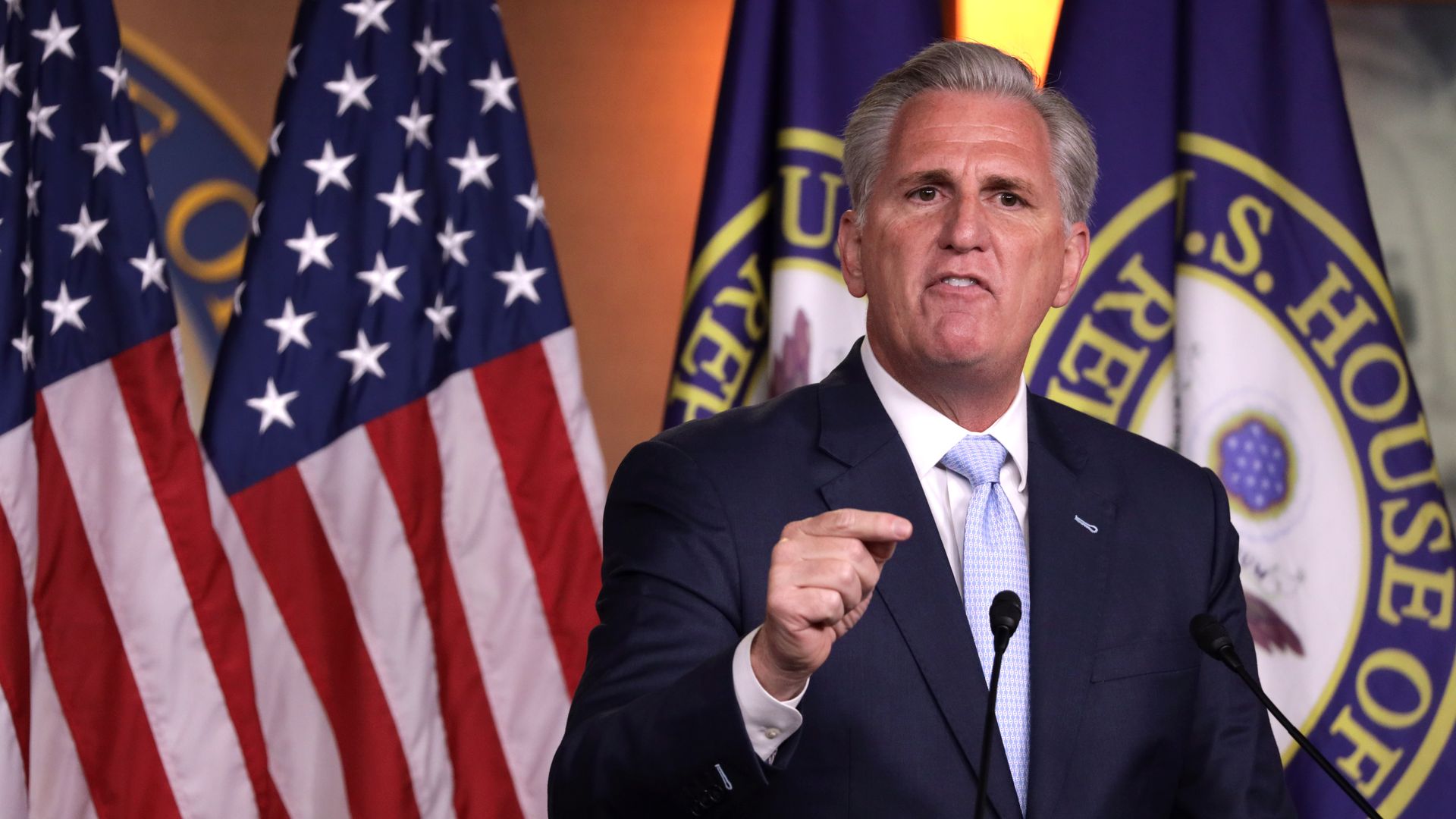| |
| |
| |
| Presented By OurCrowd |
| |
| Axios Sneak Peek |
| By Alayna Treene and Hans Nichols ·Aug 15, 2021 |
| Welcome back to Sneak on this somber, late-summer Sunday, 7,252 days after the U.S. launched Operation Enduring Freedom in Afghanistan. 🚨 Breaking: The U.S. is rushing another 1,000 troops to help with the frenzied evacuation, after Afghan President Ashraf Ghani fled the country and the Taliban pushed into Kabul, AP reports. ⚡ Situational awareness: Chairman of the Joint Chiefs of Staff Mark Milley told senators today he expects to speed the timeline of a previous assessment of how soon terrorist groups will likely reconstitute in Afghanistan, Axios' Jonathan Swan scooped earlier Sunday. Smart Brevity™ count: 1,460 words ... 5.5 minutes. Edited by Margaret Talev. |
| |
| |
| 1 big thing: First person - Inside Kabul, then and now |
 |
|
| The traveling party for Secretary of State John Kerry - led by future U.S. Ambassador to Afghanistan John Bass - is seen landing near the U.S. Embassy in Kabul in 2013. Photos: Glen Johnson/State Department - Public Domain |
| |
| The U.S. Embassy in Kabul was the only safe haven inside that danger zone, Axios' Glen Johnson writes in a first-person dispatch recalling flights on armed helicopters and finding a Kevlar helmet and flak vest in a bedroom over his five visits during the Obama era. Why it matters: Diplomats who fled the high-walled garrison already worked in difficult conditions. Huddled at Afghanistan's last free airport, they're even less capable of saving the nationals who helped them — or the women and businesspeople who flourished with their aid over the past 20 years. Glen writes: As a senior communications aide to then-Secretary of State John Kerry, I visited Afghanistan twice in 2013 and 2014 and once in 2016. Each time, he was working to stand up or maintain the government of President Ashraf Ghani — who fled the country Sunday. - We'd take choppers from Hamid Karzai International Airport to a commandeered soccer field near the embassy because it was too dangerous to risk a motorcade.
- Even inside a green zone protected by the Afghan army and private contractors, we'd load into armored vehicles and snake through checkpoints built to stop suicide bombers.
- Several of those riding beside me on some of those trips went on to become high officials in today's Biden administration: White House press secretary Jen Psaki, principal deputy national security adviser Jon Finer and Defense Department press secretary John Kirby.
Once within the embassy complex, we'd walk along covered walkways that blocked snipers and sleep in fortified "hooches." - The stacks of sand-bagged shipping containers had a desk, bed, bathroom and closet — where the battle gear was reachable at a moment's notice, alongside an iron and ironing board.
- Taped to the wall were directions to the nearest bunker. Alongside was a sheet explaining the meaning of different bursts of sirens. One sequence meant "duck-and-cover" — the same name as the famed bar inside the complex.
- It was an oasis of normalcy for the staff — and the bane of the Diplomatic Security Service after more than one late-night fight fueled by dating jealousies.
Life for the staff on such assignments was never easy. - Kabul is one of several diplomatic postings in the world that's unaccompanied: It's too dangerous to take along your spouse or children. Few staffers would leave the confines for fear of kidnapping or assassination.
- Most who worked there hoped to earn a plush foreign posting down the road.
- They've been compensated with extra pay, chunks of vacation time and free food, accommodations and pool and gym facilities.
Many learned to block out the danger and make the best of the situation. - During one of our visits, I saw a State Department worker running loops along the inside of the embassy walls.
- When I asked what she was doing, I was told she was training to run a marathon — 26.2 miles round and round the safest circle in town.
Editor's note: Axios' politics editor Glen Johnson served as deputy assistant secretary of State for strategic communications and State Department travel photographer from 2013-17. He wrote a book about the experience. Keep reading. |
    |
| |
| |
| 2. Afghan diary |
 |
|
| Anti-missile decoy flares are deployed as U.S. Black Hawks fly above Kabul. Photo: Rahmat Gul/AP |
| |
| "Taliban are under our block," one Afghan who supported the U.S. mission but hadn't yet been evacuated texted today to an official in touch with Glen. "We are at our home. ... Waiting what's gonna happen." Why it matters: Tens of thousands of men and women — not just translators but a far broader swath of the Afghan community including staff and contractors — are sitting targets now. What they're saying: "This shit is insane. Our folks will die," the U.S. source told Glen. They "knew they were targets and still worked for us, with us to bring governance, peace, justice, equality to their country. I'm heartbroken." |
    |
| |
| |
| 3. Two hot House races |
 |
|
| Lauren Underwood (left) and Lucy McBath. Photos: Tom Williams/CQ-Roll Call (left), Alex Edelman/Pool/Getty Images |
| |
| Democrats are prioritizing two competitive House seats held by Black women in their party — Reps. Lauren Underwood in Illinois and Lucy McBath in Georgia — as new census data shows how demographic shifts are shaping the midterms, Axios' Alexi McCammond writes. Why it matters: Each of these swing districts covers a majority white area that Republicans are eager to take back. - "My district is a must-win seat — there is no room for failure," Underwood told Axios. She called it a bellwether for the rest of the Midwest.
Details: Elections experts told Axios both districts could change dramatically — but in different ways — because of the 2020 count. - Democrats who control Illinois state politics will likely make Underwood's district whiter and much safer territory for their party.
- Republicans who control Georgia will likely make McBath's district whiter and more GOP-friendly. Democrats say holding both is critically important to keeping the majority.
The big picture: They're among 30 so-called front-line House Democrats running for re-election in recently red districts that the national Democratic Party has identified as their top priorities for the next election cycle. - Underwood and McBath each were first elected to their districts in 2018.
- While Black members of Congress don't represent most majority-white districts, there was a surge of such examples that year.
- Last year, Biden won Underwood's district (Illinois-14) and McBath's (Georgia-6), but Republicans Donald Trump in 2016 and Mitt Romney in 2012 carried both areas.
Keep reading. |
    |
| |
| |
| A message from OurCrowd |
| OurCrowd helps you add top startups to your portfolio |
| |
 |
| |
| Problem: Startups are staying private longer, keeping investment growth behind closed doors. Solution: OurCrowd is changing that. They have 73K members and have invested $1B+ in companies like Lemonade and Beyond Meat — pre-IPO. Get in early on tomorrow's big deal - with OurCrowd. |
| |
| |
| 4. McCarthy's silent treatment |
 |
|
| Kevin McCarthy. Photo: Alex Wong/Getty Images |
| |
| House Minority Leader Kevin McCarthy (R-Calif.) has been maintaining a deliberate silence about how his Republican caucus should approach the $1.2 trillion bipartisan infrastructure bill, Axios' Alayna Treene reports. Why it matters: It passed the Senate last week with the support of 19 Republicans, including Minority Leader Mitch McConnell (R-Ky.). But it faces an uncertain future in the House, with even Democrats divided over what they want. The intrigue: Speaker Nancy Pelosi (D-Calif.) has insisted the House won't vote on the bipartisan infrastructure package until the Senate also passes the Democrats' $3.5 trillion bill. - But in a "Dear Colleague" to members Sunday morning, Pelosi said she's requested the Rules Committee to explore passing a rule to advance both the budget resolution and the bipartisan package.
- The move was a nod to moderate Democrats, giving them a chance to show constituents they voted to advance the $1.2 trillion bipartisan bill.
What we're hearing: Several House GOP aides, including those in leadership, told Axios that as long as Pelosi continues to tie the bills together, they doubt many, if any, House Republicans will support it. Their internal polling suggests their base connects the bipartisan agreement with Democrats' $3.5 trillion plan. - It also means the House will likely not consider the $1.2 trillion bill for several weeks, if not months.
- The House GOP conference has yet to receive guidance on messaging for the bipartisan bill. It's targeting all of its messaging on attacking Democrats' plans for the larger, unilateral spending bill.
- McCarthy spokesman Mark Bednar told Axios that McCarthy "does not support the bill in its current form" as long as it's tied to the reconciliation process.
- McCarthy is "keeping the focus on the battle we know we can win on messaging," another senior GOP aide told Axios.
What's next: The House will come back early from its recess on Aug. 23. Keep reading. |
    |
| |
| |
| 5. Charted: Dem advantage |
 Data: U.S. Census; Chart: Danielle Alberti/Axios Bigger population jumps than expected in major cities. More diversity. Booming suburbs. Dwindling rural areas: All may make it harder — but not impossible — for Republicans to manipulate district lines to strengthen their power in states like Texas and Georgia, writes Axios' Stef Kight. Why it matters: The first results of the 2020 census are a balm for Democrats anxious about Republican gerrymandering efforts. Between the lines: Some of the fastest-growing counties in the last decade are near blue cities in red states — like Hays and Comal counties in Texas and Bryan County, Georgia. - Meanwhile, almost all of the shrinking counties are moving toward Republicans, NDRC's targeting and analytics director Claire Low told Axios.
What we're watching: Of note is just how much growth there's been in major cities like New York City and Chicago — both situated in states where Democrats control redistricting. That could help Dems dilute the power of rural Republican areas of those states. Keep reading. |
    |
| |
| |
| 6. Focus groups: Some swing voters souring on Biden |
 |
|
| Illustration: Annelise Capossela/Axios |
| |
| Some Trump-to-Biden swing voters are showing early signs of souring on President Biden despite his big win with the $1.2 trillion bipartisan infrastructure package clearing the Senate, Axios' Sarah Mucha reports. Why it matters: Democrats are counting on Biden's brand of governance and handling of COVID-19 and the economy to save them in next year's midterm elections. - Every president's honeymoon ends eventually. The question is whether these findings amount to an asterisk or reflect a growing trend that should concern the White House.
Keep reading. |
    |
| |
| |
| 7. Photo of the day |
 |
|
| Photo: Haroon Sabawoon/Anadolu Agency via Getty Images |
| |
| Afghans line up to get their cash out at Azizi Bank as the Taliban takes control. |
    |
| |
| |
| A message from OurCrowd |
| Meet the VCs that invested in Lemonade and Beyond Meat before the IPOs |
| |
 |
| |
| Global network of 73K+ members and 1000+ MNCs (from Honda to P&G and Travelers to Pepsico), OurCrowd accelerates startups' success. Typical rounds are $2-$20M, with opportunity for more alongside institutional investors. Take the next step to global success - with OurCrowd. |
| |
| 📬 Thanks for reading. We'll be back next Sunday, with additional Sneak Peek Thought Bubbles this month to recap the latest congressional action. Tell your family, friends and colleagues, they can subscribe to this or any of Axios' free newsletters by clicking here. |
 | | It'll help you deliver employee communications more effectively. | | |











No comments:
Post a Comment